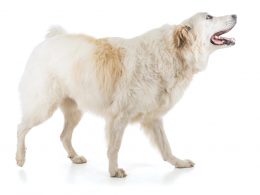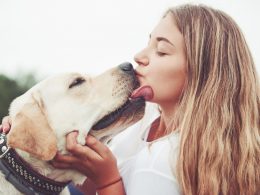When I think of summer, I remember the beautiful days of walking in the park and enjoying myself with friends at the pool’s edge. Soon after, I remember the excessive heat, the sweat, and the search for shade from the trees in the park when I take my dog for a walk. Summer, despite being a season of holidays and beautiful days, is not even close to the best season for dogs. Did you know that our furry friends also suffer in the heat? High temperatures affect our furry ones, especially during the day with high humidity. They are more stressed and, like us, they can have some health complications, so it is essential to double care for dogs during extreme heat.
The ambient temperature range for thermal comfort of dogs is between 50°F and 86°F. Within this range, they can express normal behavior by adapting perfectly to the environment without causing any harm to their health and well-being. However, not all dogs are the same, and we have to observe the behavior of each individual to see if he is comfortable with the temperature.
Why Does My Dog Get So Hot At Night?
In summer, temperatures are typically very high, exceeding dogs’ thermal comfort range, causing several discomforts. To understand why dogs feel hot, we need to know how a dog’s temperature regulation works and how to tell if he is feeling hot or not. This process is called thermoregulation, a physiological process to maintain the proper body temperature, and works in several ways. You may have noticed that dogs change their coat during the change of season, right? This process is a clear example of body temperature regulation. That is, dogs tend to change their coats to less dense ones in seasons with higher temperatures to get less hairy and reduce the impact of high temperatures. However, be aware that dogs with double coats like the Siberian Husky, German Spitz, and Malamute should NEVER be clipped. This double coat maintains the proper body temperature in hot or cold seasons. Cutting them will take this thermal regulation tool out of your dog.
How Do I Know If My Dog Is Too Hot At Night?
You must be wondering: Does the dog still feel hot after changing the coat? Yes, as much as the fur is less thick, depending on the temperature and humidity of the day, the dog can feel very hot. So how can I identify if my dog is hot? That’s easy. Think about the following: if I’m hot, my dog must be too but stay tuned because dogs show behavioral signs. Check out the main symptoms:
- Out of breath: This behavior is characteristic of dogs that are hot. Do you know when the dog is breathing with its tongue out? The name of this is panting, many owners think it’s thirst, but it’s just the dog trying to regulate its body temperature through heat exchange with the environment.
- Excessive salivation: like breathing, saliva also works as a thermoregulation mechanism. If your dog is drooling a lot, he is probably hot.
- Apathy: dogs tend to be more prostrate and lethargic with excess heat. That is, they interact less and appear to be tired.
- Staggering gait: only in cases of extreme heat.
It is important to emphasize that the sweat glands, the ones responsible for causing sweat in our body, which are present in the paws of dogs, play an important role in the skin’s health, such as lubrication. However, they do not have functionality in thermoregulation, as they cannot produce sweat, unlike our bodies. So, if your dog’s paw is wet, it doesn’t mean it’s sweating, okay?
How Do You Keep A Dog Cool On A Hot Night?
In the cases of hot days and nights, it is essential to cool your dogs. During the day, this process becomes more manageable, as you can offer hose baths, fruit popsicles, or frozen meats. But what about at night, how to do it?
- Keeping the dog in a well-ventilated area with air circulation would be best. If possible, keep the dog in fans or air conditioning rooms.
- Always leave several bowls at the disposal of the dog and with plenty of fresh water. Tip: you can leave ice inside the dog water bowl to stay at a refreshing temperature.
- Don’t use the same beds you use in winter, with blankets and blankets. The dog will prefer to stay on the icy floor, or icy dog mats that you can easily find on the internet will be enough to make them comfortable on hot nights.
If you notice that your dog, despite being in a ventilated environment and with water available, is showing signs of heat, he may have overheated! And now? Calm down. Let’s understand what causes overheating and how to treat it quickly.
What Is The Fastest Way To Cool Down A Dog?
Overheating is also known as hyperthermia. It occurs when there is excess heat that may or may not be associated with intense physical exercise, and the body cannot regulate the ideal temperature, compromising the functioning of the organs. In some cases, it can lead to death.
What to do in these cases? To cool your dog quickly, you should wrap it in a damp towel until the temperature drops, and you can also put a cold thermal bag in the abdomen region. Attention: never give an ice bath! Although it may seem like a quicker solution, you may aggravate the case, causing thermal shock.
Some factors, such as brachycephalic breeds and overweight or obese dogs, may require double care. These conditions worsen hyperthermia (body overheating) in dogs because the thermoregulation mechanisms are not compromised. To prevent overheating on the sidewalk, follow these recommendations:
- Avoid walking during high-temperature hours, between 10 pm and 4 pm, and bring a bottle of water to refresh your dog on the way.
- Take only light walks, don’t run, or make your dog do excessive physical activity.
- Before going for a walk, check if the asphalt and sidewalk are not in high temperatures, so be barefoot and try to walk under the floor. If it’s too hot and you can’t walk, don’t take your dog for a walk, as it will undoubtedly burn the cushions (“pillows ” of the paws).
- Try to walk on short paths with shade and resting places to take breaks during the walk.
- If you go out in a car, never leave your dog alone in the car without the windows open or the air conditioning on, even if quickly.
- If your dog shows signs of overheating, take him to the vet, it may be necessary to perform intravenous hydration to circumvent the situation.














